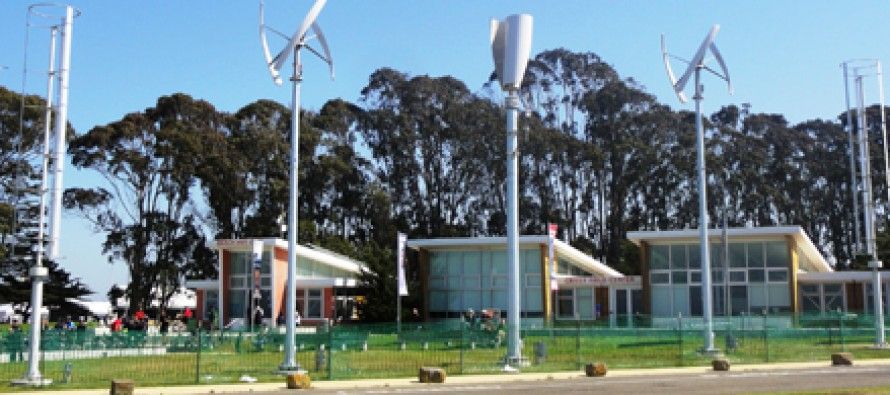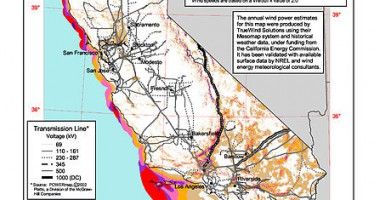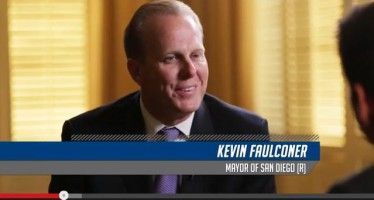Little Hoover questions green energy costs

 Gov. Jerry Brown is on a political roll. He won re-election and passage of an historic $7.5 billion water bond that contains funding for the first surface water storage projects in 50 years.
Gov. Jerry Brown is on a political roll. He won re-election and passage of an historic $7.5 billion water bond that contains funding for the first surface water storage projects in 50 years.
But that hasn’t deterred the Little Hoover Commission, an independent state oversight agency, from sending a letter to Brown asking: “In enacting the Renewable Energy Portfolio Standard in 2011: how much is it going to cost”? California’s Renewable Energy Portfolio mandates that one-third of all retail electricity sales must come from renewable energy by 2020.
The apparent answer to this question is that nobody knows for sure because there is no comprehensive state energy plan in place, even though California touts itself as the world leader in renewable energy and energy efficiency.
The Commission was blunt:
“The Commission’s 2012 review focused on ensuring that California succeeds in transforming its electricity system while simultaneously implementing greenhouse gas emission reduction goals and water quality policies that affect electricity. In enacting its ambitious renewable energy goal, California lawmakers neglected to ask how much will it cost? An essential component of implementing the renewable portfolio standard is a firm commitment to fiscally responsible stewardship.
“Thus, in its 2012 report, the Commission requested that the administration examine how much, in the aggregate, will recent major policy changes related to energy affect electricity reliability and rates, and are these policies achieving California’s stated energy goals? We are deeply concerned that insufficient attention has been paid to this issue. Despite the Commission’s request in 2012 and in subsequent inquiries, Californians still lack the measuring tools to evaluate the full costs of implementing the renewable portfolio standard simultaneously with other major energy policy goals. Given the positive record of California relating to affordable electricity through energy efficiency, we are disappointed that the cost side of the equation has received inadequate or incomplete attention.”
Higher rates
The commission found, “California residential electricity bills were nearly 20 percent lower than the average U.S. electricity bill,” but the state has higher-than-average electricity rates. But according to the National Bureau of Economic Research, low electricity bills are a fluke mainly due to California’s moderate climate, not its energy policies. Most of the state avoids the harsh winters of the U.S. Northeast and the hot, humid summers of the South.
The U.S. Energy Information Agency reports California residential electricity rates are 35 percent higher than the U.S. average. Even worse, commercial and industrial power rates are 60 to 85 percent higher than the national average.
California Electricity Prices October 2014 – U.S. Energy Information Agency
| Sector | California | U.S. Average | Percent Higher than U.S. Average |
| Residential | 17.67 cents/kWh | 13.05 cents/kWh | 35 percent |
| Commercial | 17.89 cents/kWh | 11.16 cents/kWh | 60 percent |
| Industrial | 13.89 cents/kWh | 7.49 cents/kWh | 85 percent |
California, a basin state, can tout that it has reduced carbon dioxide (C02) emissions by 30.9 million tons, or 8.2 percent, since 2000.
But Texas, a plains state that relies less on renewable energy than California, reduced its C02 levels by 64.8 million tons, or 9.0 percent over the same time.
 According to the American Lung Association’s list, California has nine of the worst 25 cities for air pollution in the U.S.: Los Angeles, Bakersfield, Visalia, Fresno, Sacramento, El Centro, San Diego, Hanford and Merced. Texas has no cities on the list.
According to the American Lung Association’s list, California has nine of the worst 25 cities for air pollution in the U.S.: Los Angeles, Bakersfield, Visalia, Fresno, Sacramento, El Centro, San Diego, Hanford and Merced. Texas has no cities on the list.
Why? The answer is topographical. Most Californians live in nine topographic basins along the coastline that serve as traps for smog in an inversion layer. Texas is a Plains State with no smog traps and high humidity along the Gulf of Mexico.
Where’s the social dividend from renewable energy?
The concerns about California’s renewable energy standards go beyond cost, however. An issue not raised by Little Hoover is: Where is the social and environmental dividend from the high costs of renewable energy?
Texas relies on imported dirty coal for 35 percent of its electricity generation, while generating only 0.1 percent of its power from hydroelectricity and 6.7 percent from renewable energy. By comparison, California depends on 0.6 percent of its electric generation from coal-fired power plants, 11.0 percent from hydropower, and 20.8 percent from renewable energy. Yet Texas has reduced C02 more than California, while California has no health gains to show for it (see table below).
The Little Hoover Commission is requesting greater accountability and transparency about the costs of California’s renewable energy portfolio. Perhaps the commission should extend this effort to the expected social dividends from green power as well?
So far, voters have not punished elected officials for this lack of accountability. Until the politicians are made to pay at the ballot box for high power rates, they can continue to ignore the concerns over accountability.
| Net Electricity Generation | California | Texas |
| Petroleum-Fired | 0.1% | 0.0% |
| Natural Gas-Fired | 56.7% | 49.0% |
| Coal-Fired | 0.6% | 35.0% |
| Nuclear | 8.4% | 8.6% |
| Hydroelectric | 11.9% | 0.1% |
| Renewables | 20.8% | 6.7% |
| C02 Reduction 2000-2011 | 8.2% — 30.9 million tons | 9.0% — 64.8 million tons |
| Residential Electricity Price kWh | 17.67 cents per kWh | 12.00 cents per kWh |
| Population | 38.3 million | 26.4 million |
| GDP | $2,125.7 billion | $1.463 billion |
| Cities on Lung Assoc. Worst Air Pollution List | Los Angeles, Bakersfield, Visalia, Fresno, Merced, Sacramento, El Centro, San Diego, Hanford | None |
| Climate 2014 | Drought 2014 | Drought 2012 |
| Extreme Weather | Low | High |
| Warming After 1970 | 0.02 degrees Fahrenheit per decade | 0.04 degrees Fahrenheit per decade |
| Asthma Rate in 2008 | 8.4% | 7.3% |
| Lung Cancer Rate 2011 per 100,000 | 29.3 to 55.8 | 29.3 to 55.8 |
Related Articles
AG’s bullet-train appeal: Judges should know their place. LOL!
After rereading Attorney General Kamala Harris’ court filings from October and last week regarding the bullet train, I’m more convinced
Gov. Brown’s 50% renewable goal a tough target
In his Jan. 5 inaugural address for his historic fourth term as California’s governor, Jerry Brown proposed an ambitious
VIDEO: Republicans can be environmentalists, too
In a conversation with CalWatchdog.com Editor Brian Calle, San Diego Mayor Kevin Faulconer discusses the importance of preserving the environment




